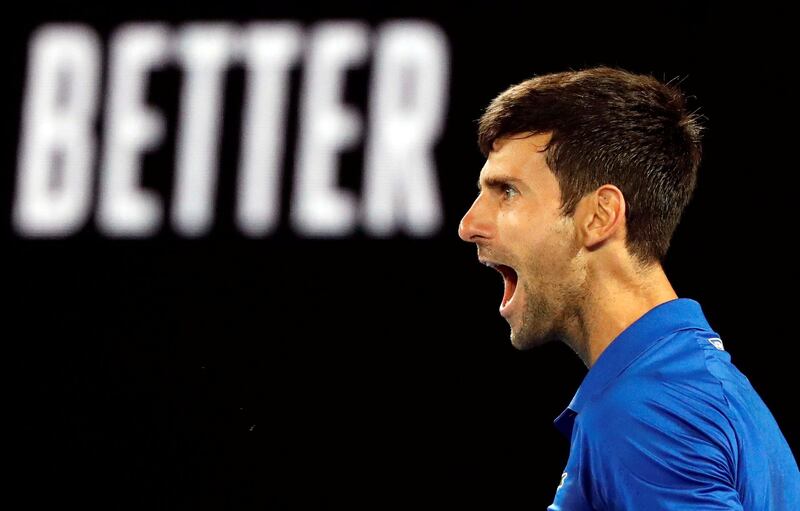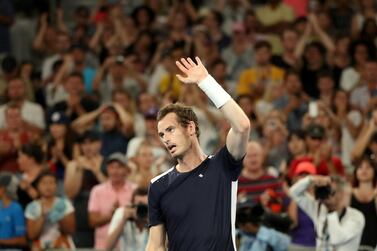The 2019 ATP season may only be a matter of weeks old, but already it’s threatening to turn into a procession. That may seem a little dramatic, but anyone who tuned in to the Australian Open – and in particular the final – to witness the latest Novak Djokovic masterclass would have seen a snapshot of what this season could have in store.
Djokovic looked typically efficient at Melbourne Park to reach the final, like a finely-tuned sports car going through the gears as his level of opposition gradually increased. After largely cruising in second with the occasional foray into third, the top-seeded Serb revved into fifth and turned on the turbochargers from the start of his final against great rival Rafael Nadal.
In hindsight, Djokovic probably didn’t need to, given Nadal’s out-of-sorts performance, but it nonetheless resulted in a crushing victory and a record seventh Australian Open title.
Not only that, but it felt like a sort of wake-up call, or paradigm shift. Not so much about Djokovic’s undisputed standing at the top of the men’s game – but just how much the chasm is growing between him and the rest.
The past three grand slam titles are all securely stored in the 31-year-old Serbian’s trophy cabinet, but it was the manner of the win over Nadal – more so than his Wimbledon triumph against a visibly exhausted Kevin Anderson or his US Open victory over Juan Martin del Potro – that has demanded a reevaluation of the season ahead.
Once again, it’s important to stress that Nadal had an off day, two weeks of best-of-five-set tennis – albeit played at a remarkable level prior to the final – had caught up with the Spanish world No 2, who had not played competitively since September and underwent ankle surgery in the off-season.
However, therein arguably lies the problem. Nadal, at least when fully fit and firing, is Djokovic’s only serious challenger at the big events, but too much time is spent by the Spaniard either injured or making his way back from injury.
Despite the enduring legacy of Roger Federer, it is the Djokovic-Nadal rivalry that has defined this era of men’s tennis. Indeed, the Australian Open final was a record-extending 53rd meeting between the pair, with Djokovic now leading the head-to-head 28-25.
Novak's Masterpiece 👨🎨#AusOpen pic.twitter.com/H4NRF9rzDr
— #AusOpen (@AustralianOpen) January 27, 2019
Nadal, given his long list of injuries, is likely to again play a selective schedule for much of the season, getting himself prepared for the clay-court swing and an assault on a barely believable 12th French Open title. Beyond that, expect the 17-time grand slam champion to listen to his body when determining the remainder of his season.
So if Nadal is unable to provide a consistent, year-long challenge, who can stop the Djokovic juggernaut this season?
Even the most fervent of Federer fans – and there are plenty of those – would struggle to make a case for their man as a realistic challenger to Djokovic. The Swiss has lost their four most recent meetings, stretching back to the 2015 ATP Finals, while Djokovic has won 14 of their past 20 matches.
Federer’s selective schedule worked wonders in 2017, winning the Australian Open and Wimbledon titles, but last year he was showing clear signs of decline. Now 37, it is only natural the 20-time major champion is starting to show his age.
"To be standing now here in front of you today and managing to win this title and three out of four Slams is truly amazing."
— #AusOpen (@AustralianOpen) January 27, 2019
It's been a whirlwind 12 months for @DjokerNole 🙌#AusOpen #AusOpenFinal pic.twitter.com/aZfEHwKNBr
Andy Murray provided a worthy challenge for a spell across 2016 and 2017, but the British three-time grand slam winner has effectively called time on his career following a hip injury that has now required two separate surgeries.
Djokovic, and indeed Nadal and Federer, have already seen off one wave of new talent attempting to gatecrash the elite – the likes of 28-year-olds Milos Raonic and David Goffin, 27-year-old Grigor Dimitrov, and 25-year-old Dominic Thiem appear no closer to landing an elusive major.
It means the tennis world is now looking to the newest new generation – led by Alexander Zverev, Stefanos Tsitsipas and Karen Khachanov – to step up and provide the competitiveness that all elite sport needs to thrive.
There will of course come a time when the big guns hang up their rackets and tennis is thrust into a new era, but for now – for this season at least – there seems little in the way of Djokovic stampeding his way to more titles.
The biggest challenge will likely come from Djokovic himself as he looks to raise his own bar, set first in 2011 and again in 2015 when he won 10 and 11 titles respectively. Both of those seasons also started with Australian Open triumphs.






